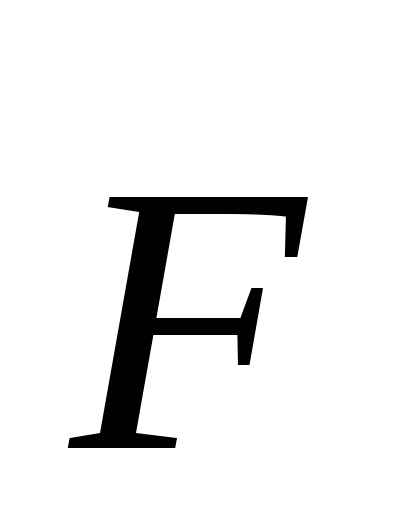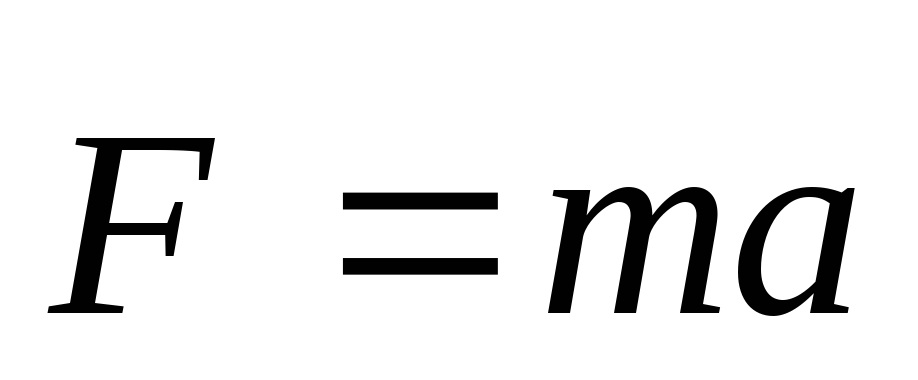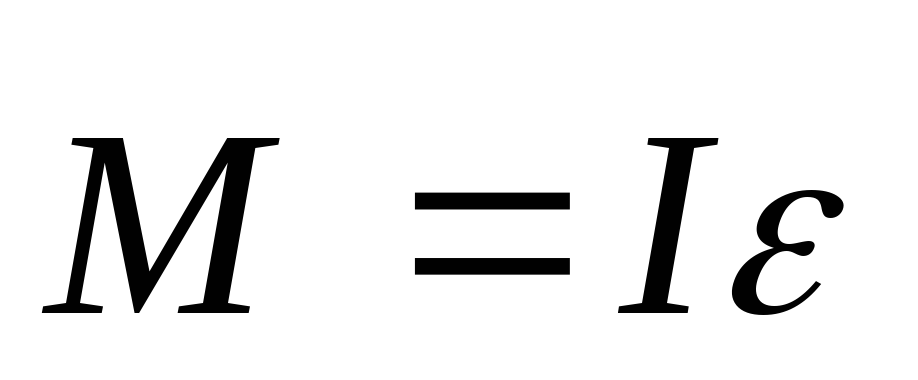Body impulse is vector physical quantity, which is equal to the product of the speed of a body and its mass. Also, the momentum of a body has a second name - momentum. The direction of the body's momentum coincides with the direction of the velocity vector. The momentum of a body in the C system does not have its own unit of measurement. Therefore, it is measured in the units included in its composition: kilogrammometer per second kgm/s.
Formula 1 - Body impulse.
m is body weight.
v is the speed of the body.
The momentum of a body is, in fact, a new interpretation of Newton's second law. In which the acceleration was simply expanded. In this case, the value Ft was called the impulse of force, and mv was called the impulse of the body.
The impulse of a force is a physical quantity of a vector nature that determines the degree of action of a force over the period of time during which it acts.
Formula 2 - Newton's second law, body momentum.
m is body weight.
v1 - starting speed bodies.
v2 - final speed bodies.
a is the acceleration of the body.
p is the momentum of the body.
t1 - start time
t2 is the final time.
This was done so that it was possible to calculate problems associated with the movement of bodies of variable mass and at speeds comparable to the speed of light.
The new interpretation of Newton's second law should be understood as follows. As a result of the action of force F during time t on a body of mass m, its speed will become equal to V.
In a closed system, the magnitude of the momentum is constant, this is the law of conservation of momentum. Let us recall that a closed system is a system that is not affected by external forces. An example of such a system would be two dissimilar balls moving along a straight path towards each other, with same speed. The balls have the same diameter. There are no friction forces during movement. Since the balls are made of different materials, then they have different masses. But at the same time, the material ensures absolute elasticity of bodies.
As a result of the collision of the balls, the lighter one will bounce off at a higher speed. And the heavier one will roll back more slowly. Since the impulse of the body imparted by a heavier ball to a lighter one is greater than the impulse given by a light ball to a heavy one.
Figure 1 - Law of conservation of momentum.
Thanks to the law of conservation of momentum, reactive motion can be described. Unlike other types of motion, reactive motion does not require interaction with other bodies. For example, a car moves due to the force of friction, which pushes it away from the surface of the earth. During jet motion, interaction with other bodies does not occur. Its cause is the separation of part of its mass from the body at a certain speed. That is, part of the fuel is separated from the engine in the form of expanding gases, while they move at enormous speed. Accordingly, the engine itself acquires a certain impulse, which imparts speed to it.
AMOUNT OF MOVEMENT(pulse)- a measure of mechanical motion, equal for a material point to the product of its mass m and speed v. The amount of motion mv is a vector quantity, directed in the same way as the speed of the point. The amount of motion is also called impulse
In classical mechanics complete impulse systems of material points are called vector quantity, equal to the sum of the products of the masses of material points and their speed:
![]()
Properties of impulse
Additivity. This property means that the momentum of a mechanical system consisting of material points is equal to the sum of the momentum of all material points included in the system.
Invariance with respect to rotation of the reference system.
Preservation. The momentum does not change during interactions that change only the mechanical characteristics of the system. This property is invariant with respect to Galilean transformations. The properties of conservation of kinetic energy, conservation of momentum and Newton's second law are sufficient to derive the mathematical formula for momentum
Generalized impulse in theoretical mechanics[edit|edit wiki text]
In theoretical mechanics generalized impulse is called the partial derivative of the Lagrangian system with respect to the generalized velocity
If the Lagrangian of the system does not depend on some generalized coordinate, then by virtue of the Lagrange equations.
For a free particle in relativistic mechanics, the Lagrange function has the form:, hence:

The independence of the Lagrangian of a closed system from its position in space follows from the property of homogeneity of space: for a well isolated system, its behavior does not depend on where in space we place it. According to Noetheris' theorem, this homogeneity follows the conservation of a certain physical quantity. This quantity is called impulse (ordinary, not generalized).
Impulse of force is a vector physical quantity, equal to the product force is the time of its action, a measure of the impact of force on a body over a given period of time (in forward motion).
Over a finite period of time, this value is equal to a certain integral of the elementary impulse of the force, where the limits of integration are the moments of the beginning and end of the time period of action of the force. In the case of simultaneous action of several forces, the sum of their impulses is equal to the impulse of their resultant during the same time.

In rotational motion, a moment of force, acting for a certain time, creates an impulse of the moment of force. Momentum impulse is a measure of the impact of a moment of force relative to a given axis for a given period of time (in rotational motion):

where is the vector product.
Theorem on the change in momentum of a system
The concept of force impulse allows us to formulate a theorem on the change in the momentum of a system for arbitrary systems:
![]()
where is the initial and a is the final impulse of an isolated system that interacts with other systems only through forces. In fact, in this formulation the law of conservation of momentum is equivalent to Newton's second law and is its integral over time, since
LAWS OF CONSERVATION OF MOMENTUM AND TORQUE
IMPULSE
Learning objective: achieve an understanding of the physical essence of the laws of conservation of momentum and angular momentum. Instill skills in independently solving problems using these laws.
Literature
Main: Detlaf A. A., Yavorsky B. M. Physics course. – M.: graduate School, 1989.– Chapter 5, § 5.1 – 5.3.
Additional: Savelyev I.V. Well general physics. – M.: Nauka, 1987. – T.1, chapter 3, § 27 – 29.
Test questions to prepare for class
1. What is the impulse of a body? An impulse of power? Their units of measurement.
2. Formulate the definition of a closed system of bodies.
3. Formulate and write down the law of conservation of momentum for a system of bodies?
4. What is the recovery factor? What does it depend on?
5. What is called impact, elastic impact, inelastic impact?
6. What is called angular momentum? Unit of measurement in SI.
7. Formulate and write down the law of conservation of angular momentum for a system of bodies and one body. For what systems is it valid?
Brief theoretical information and basic formulas
Body impulse is a physical vector quantity equal to the product of the mass of a body and its speed and having the direction of speed 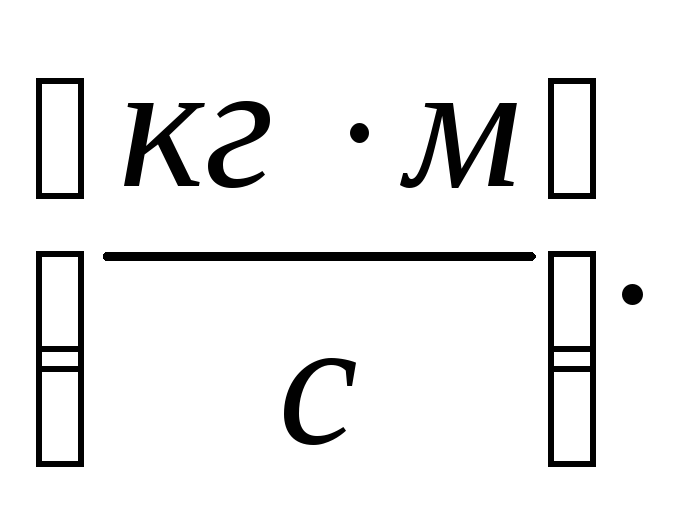
Pulse is a measure of the mechanical motion of a body with a given mass.
To change the momentum of a body, a force must act on it. The change in momentum will depend not only on the magnitude of the force, but also on the time of its action.
An impulse of power is called a vector physical quantity equal to the product of force and the time of its action, i.e.  .
.
The concept of force impulse is widely used when solving problems about the motion of several interacting bodies.
A mentally isolated set of material points (bodies) moving according to the laws of classical mechanics and interacting with each other and with bodies not included in this set is called a mechanical system. The forces of interaction between the bodies of a mechanical system are called internal. The forces with which bodies that are not part of the system interact are called external.
A mechanical system of bodies that is not acted upon by external forces  called closed or isolated. In an isolated system, the geometric sum of the impulses of the bodies entering it remains constant, that is
called closed or isolated. In an isolated system, the geometric sum of the impulses of the bodies entering it remains constant, that is
The law of conservation of momentum has found wide application when bodies collide.
With a blow is the short-term interaction of bodies that occurs as a result of their collision.
When bodies collide with each other, they undergo deformation. In this case, the kinetic energy that the bodies possessed before the impact is partially or completely converted into the potential energy of elastic deformation and into the so-called internal energy of the bodies.
To take into account energy losses, a recovery coefficient is introduced, which depends only on physical properties material tel. It is determined by the ratio of the normal component (with respect to the impact surface) of the relative velocity after the impact  to its value before impact
to its value before impact  (Fig.4.1):
(Fig.4.1):

The impact is called absolutely elastic, if after the impact the deformations that occurred in the bodies completely disappear (the kinetic energy of the body before and after the impact remains unchanged, k = 1).
U  the gift is called absolutely inelastic, if after the impact the deformations that occur in the bodies are completely preserved ( k= 0). After a completely inelastic impact, the bodies move with a common speed.
the gift is called absolutely inelastic, if after the impact the deformations that occur in the bodies are completely preserved ( k= 0). After a completely inelastic impact, the bodies move with a common speed.
In the case of an inelastic central impact of two bodies with masses
 And
And  overall speed
overall speed  the movement of these bodies after the impact can be determined from the law of conservation of momentum:
the movement of these bodies after the impact can be determined from the law of conservation of momentum:
Where  - speed of the first body before impact;
- speed of the first body before impact;  - the speed of the second body before the impact.
- the speed of the second body before the impact.
Part of the kinetic energy of bodies before impact will go to the work of deformation
With an elastic central impact, the bodies after the impact will move at different speeds. Velocity of the first body after impact

Speed of the second body after impact

When solving problems of mechanics in open systems, the law of conservation of momentum can be applied if:
a) external forces act, but the resultant of these forces is zero;
b) projection of the sum of all external forces in some direction is zero, therefore, the projection of the momentum onto this direction is preserved, although the momentum vector itself does not remain constant.
The moment of momentum of a body relative to a fixed axis is a vector physical quantity equal to the product of the moment of inertia of the body relative to the same axis by angular velocity body:


The angular momentum of a system of bodies is the vector sum of the angular momentum of all bodies in the system
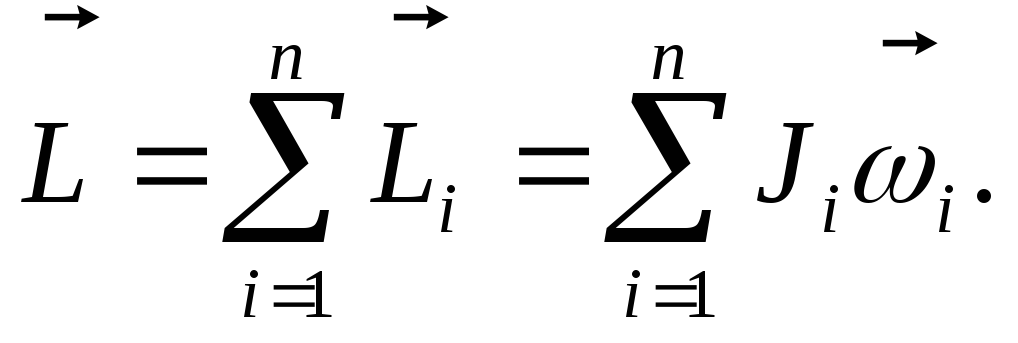
Law of conservation of angular momentum: the resulting moment of external forces applied to the system is equal to zero 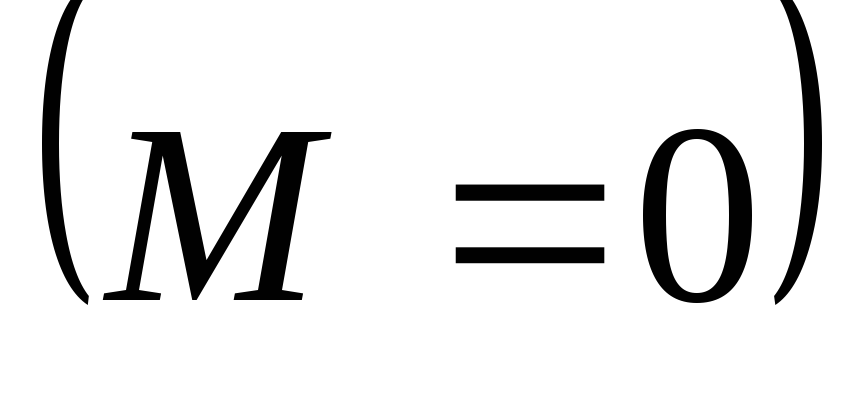 , then the angular momentum of the system is a constant quantity, that is
, then the angular momentum of the system is a constant quantity, that is
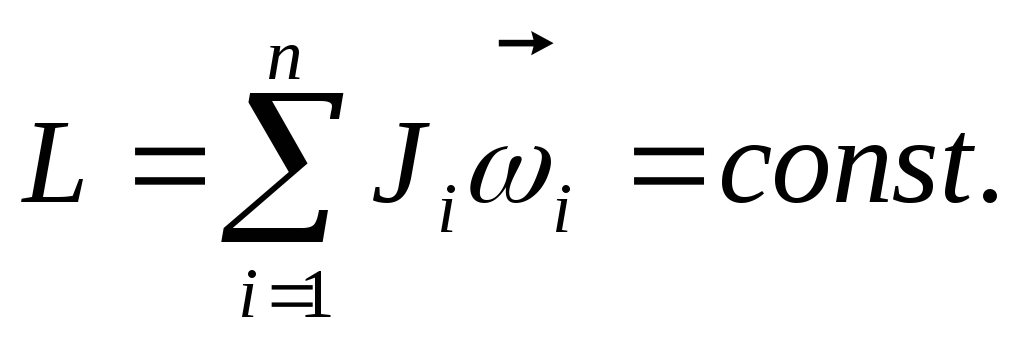
For two bodies:
Where J 1 ,
J 2 ,
 ,
, – moment of inertia and angular velocities of bodies before interaction;
– moment of inertia and angular velocities of bodies before interaction;  - the same values after interaction.
- the same values after interaction.
For one body whose moment of inertia can vary:


Where J 1 and J 2
– initial and final value of the moment of inertia;
 And
And
 – initial final angular velocities of the body.
– initial final angular velocities of the body.
In tasks on general course physicists usually consider the rotation of a rigid body only around a fixed axis or an axis moving in space parallel to itself. In this case, the physical quantities characterizing the rotational motion of the body  directed along the axis of rotation. This makes it possible to simplify the writing of the equations of rotational motion of a body. By choosing the axis of rotation as the axis of projections, all equations can be written in scalar form. In this case, the signs of the quantities
,
,M, L
determined as follows. Some direction of rotation (clockwise or counterclockwise) is chosen as positive. Quantities
,
L,M are taken with a plus sign if their direction corresponds to the selected positive direction, in otherwise– with a minus sign. Sign of magnitude
always matches the sign M.
directed along the axis of rotation. This makes it possible to simplify the writing of the equations of rotational motion of a body. By choosing the axis of rotation as the axis of projections, all equations can be written in scalar form. In this case, the signs of the quantities
,
,M, L
determined as follows. Some direction of rotation (clockwise or counterclockwise) is chosen as positive. Quantities
,
L,M are taken with a plus sign if their direction corresponds to the selected positive direction, in otherwise– with a minus sign. Sign of magnitude
always matches the sign M.
With accelerated rotation of the body, the signs of all four quantities coincide; in slow motion, two pairs of quantities - , L And M, - have opposite signs.
A comparison of the basic quantities and equations that determine the rotational motion of a body around a fixed axis and its translational motion, emphasizing their analogy, is given in Table. 4.1.
Table 4.1
|
Forward movement |
Rotational movement |
|
Resultant of external forces
Basic equation of dynamics
|
Total moment of external forces – M Basic equation of dynamics:
|

